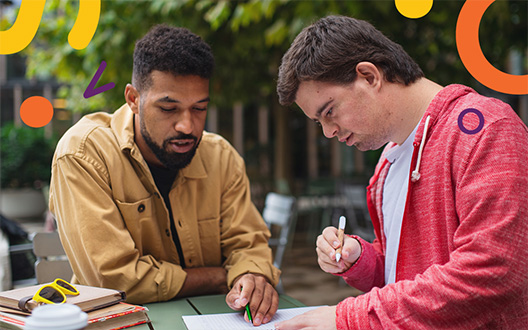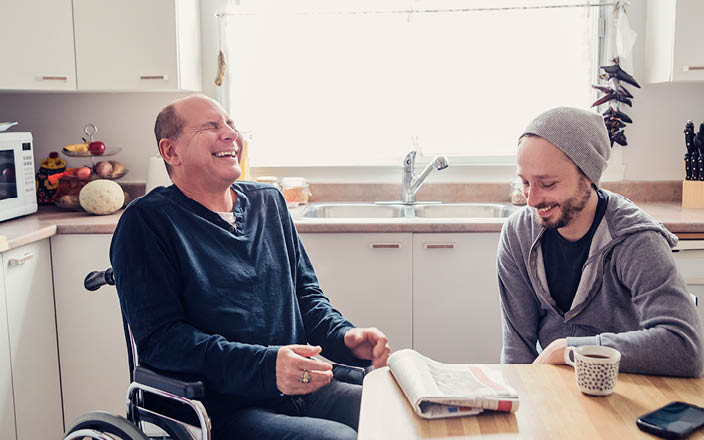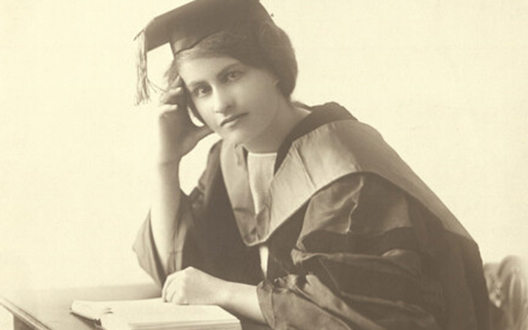The Rise of Assistive Technology
Assistive technology is changing rapidly and helping improve the lives of people with disability everywhere.
From enhancements in education, communication and mobility to sports and adaptive clothing, assistive technology is having a great impact across all aspects of life. It allows people with disability to participate in their daily activities more fully, easily and independently - to accomplish tasks that some of us might take for granted such as tying our shoe laces, eating, reading, bathing and dressing. We all face challenges, but leveraging the right technology can go a long way to reducing the burden.
But what is assistive technology and how does it differ from adaptive equipment?
As the name suggests, any device or technology that helps people with disability is known as assistive technology. According to the World Health Organisation definition (2004), assistive technology is 'any device or system that allows individuals to perform tasks they would otherwise be unable to do or increases the ease and safety with which tasks can be performed'. It’s a very broad term that covers a diverse group of products, aids, equipment and technologies. It doesn’t only refer to specialised hi-tech equipment, but also includes any low, mid or high-tech tools and devices, designed to help people with disability. The full range of information and communication technologies (ICT), positioning and mobility equipment, as well as traditional aids like specialised furniture, modified implements or tools, and consumables such as continence products are all examples.
Adaptive equipment is a sub category of assistive technology that helps enhance any services offered to people with disability, such as stair climbers, adaptive car equipment and screen readers. Adaptive technology refers to special versions of already existing technologies or tools that provide enhancements or different ways of interacting with the technology. It’s the adaptation of the technology that helps people with disability gain independence and accomplish a specific task.
While both technologies are designed to help people with disability achieve self-care and efficiency with daily activities, think of assistive technology as the umbrella term and adaptive equipment as a subcategory of that broader term.
Nike’s recent hands-free sneakers, known as the Go Fly Ease, are a great example of adaptive equipment. The shoe helps both athletes and non-athletes, with a range of physical disabilities, get ready and out the door quicker as the wearer doesn’t need to use their hands to slip the shoes on or off. The shoes are endorsed by sporting champions, including Italian fencer Vio who competes in a wheelchair: "Usually I spend so much time to get in my shoes," Vio said in a statement. "[Now] I just need to put my feet in and jump on it. The shoes are a new kind of technology, not only for adaptive athletes but for everyone's real life."
Other innovative companies such as EveryHuman also recognise the need for adaptive clothing, as one in five Australians living with a disability find dressing themselves a challenge. EveryHuman work with brands who have made subtle adjustments to mainstream fashion – whether it’s replacing buttons with magnetic closures, creating one handed zippers, or perhaps clothing for the seated position. The fashion differences might be subtle but the technology takes a lot of the stress out of the process and empowers people to achieve their goals by making life just a little easier.
Beyond improving the ease of daily activities, assistive technology is constantly evolving and has been used to benefit a diverse range of people and sectors, including students in the classroom. Some examples of technology that’s often used to assist learning include; literacy software that allows text to be read aloud, software that adjusts the screen display to suit a student’s needs and speech to text tools that allow a student to dictate their writing. The result is a more personalised learning experience for each student, better accessibility to the curriculum and a move away from a one size fits all learning approach.
Smart phones have, for some year, been at the forefront of assistive technology. From a variety of inbuilt accessibility features (sound and display options) through to the creation of thousands of Apps, communication is becoming ever more possible for people with disability. For example, on the Apple iPhone, voice activated “Siri” can search the internet for information, dial people in your contact list, send a text message, play a TV show on Apple TV and perform any number of other useful functions. It allows the user to stay connected and informed in a very simple way.
Technology has been helping people with disability live more active and fulfilled lives for a long time. Think of the advances made with the invention of the cochlear implant in 1957 or the first electric wheelchairs appearing in the 1950s. The world’s earliest functional prosthetic body parts, for example, are thought to date back to Ancient Egypt. Since then, technology has evolved significantly with lots of firsts: the first computers used in classrooms (1981), the first braille typewriter (1982), the first portable hearing aid (1987) and so many more developments. In Anson’s book, “Assistive Technology for People with Disabilities”, current technologies, their benefits and any potential obstacles are explored at length.
What becomes clear is that a “people-first” mindset is the hallmark or main feature of all assistive technology. From sport to education, daily living, mobility and communication – assistive technology is all around us and helping people with both physical and cognitive disabilities. If you’re seeking assistive technology for yourself or a family member, the NDIS has provided details and resources here. Registered NDIS providers such as Unisson Disability are also available to discuss your needs.



